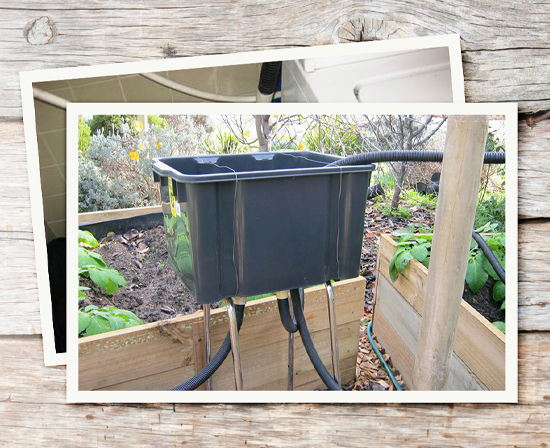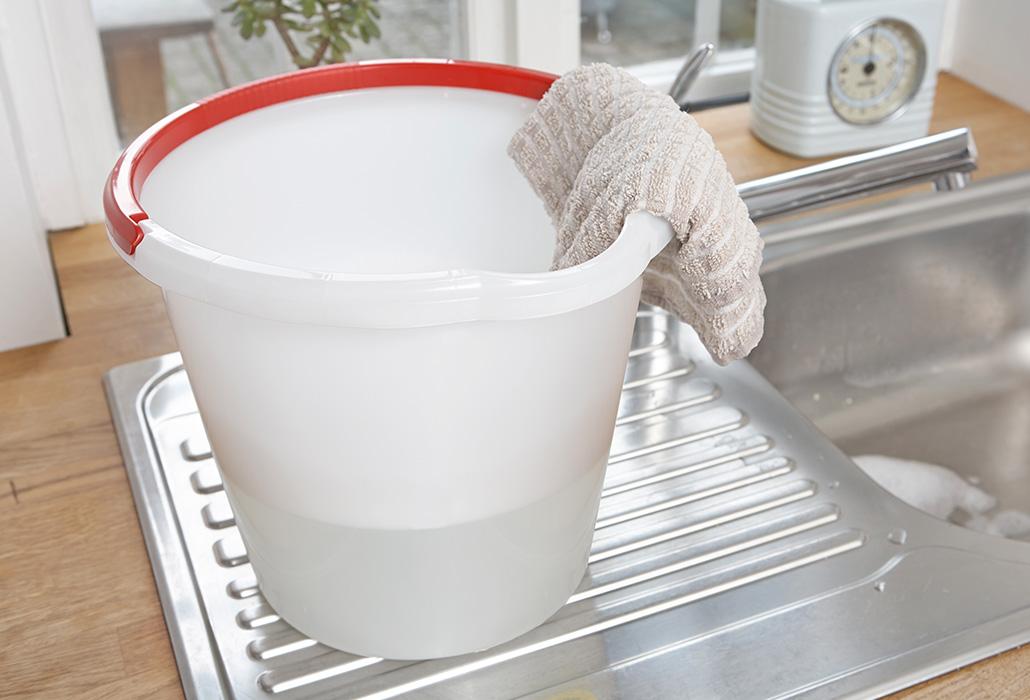
Graywater 101
Using graywater from your home on outdoor irrigation can save thousands of gallons of water.
Graywater = Untreated Wastewater
Graywater is untreated wastewater that has not been contaminated by toilet or bodily wastes. Graywater includes water from bathtubs, showers, bathroom sinks, clothes washing machines, and laundry tubs, but does not include water from kitchen sinks or dishwashers.
Graywater is untreated wastewater that has not been contaminated by toilet or bodily wastes. Graywater includes water from bathtubs, showers, bathroom sinks, clothes washing machines, and laundry tubs, but does not include water from kitchen sinks or dishwashers.

Graywater Use Conditions
Graywater should not be used in spray irrigation, be allowed to pond, runoff or discharged directly into any storm water system. Graywater should not be used to irrigate crops. The discharge point should be covered by at least 2 inches of material (e.g., mulch, rock, or soil) to minimize the possibility of human contact.

The Easiest Graywater System
Believe it or not—a bucket is the easiest graywater system there is. Just place the bucket in your shower or bathtub to capture water as it heats up and while you are bathing. Use that captured water that would otherwise just go down your drain to water your plants and trees, or to flush your toilet. No permit needed!

Laundry to Landscape Graywater Systems
Laundry to landscape graywater systems tend to be more straightforward and less costly than graywater systems that involve multiple household fixtures or appliances. It is essential to use “plant friendly” products, those without salts, boron, or chlorine bleach. The build-up of salts and boron in the soil can damage plants.
Types of Graywater Systems
There are three types of graywater systems defined in the California Plumbing Code. Each type of system has specific rules and, depending on the graywater system you use, City and/or County permits that may be required.
| TYPE OF SYSTEM | PERMIT REQUIREMENTS |
| Clothes Washer System | |
| A graywater system utilizing only a single domestic clothes washing machine in a one- or two-family dwelling. This method cannot use a secondary pump, relying instead on the washing machine pump or gravity to irrigate the garden areas. | No construction permit required if conditions in California Plumbing Code Section 1602.1.1 are met. |
| Simple System | |
| A graywater system serving a one- or two-family dwelling with a discharge of 250 gallons per day or less. Simple systems exceed a clothes washer system. | Construction permit and plans required. Construction permits require a plot plan with supporting data, drawings and plans of the graywater system, and a site test by the agency after installation. If drip emitters are not used a percolation test will be required as well. |
| Complex System | |
| Graywater systems that discharge over 250 gallons per day. Capturing the water requires separate drainlines for the fixtures and appliances generating the graywater. A system to temporarily store the graywater is necessary, along with a pump to convey the graywater to the desired location. Separating the drainlines is relatively easy during new construction, while retrofitting an existing home can be very expensive. | Construction permit and plans required. Construction permits require a plot plan with supporting data, drawings and plans of the graywater system, and a site test by the agency after installation. If drip emitters are not used a percolation test will be required as well. |
Basic Graywater Guidelines
- Don't store graywater for more than 24 hours. If you store graywater, the nutrients in it will start to break down, creating bad odors.
- Minimize contact with graywater. Graywater could potentially contain a pathogen if an infected person’s feces got into the water, so your system should be designed for the water to soak into the ground and not be available for people or animals to drink.
- Infiltrate graywater into the ground, don't allow it to pool up or run off. Knowing how well water drains into your soil (the soil percolation rate) will help with proper design. Pooling graywater can provide mosquito breeding grounds, as well as a place for human contact with graywater.
- Keep your system as simple as possible—avoid pumps and filters that need upkeep. Simple systems last longer, require less maintenance, require less energy and cost less money.
- Install a 3-way valve for easy switching between the graywater system and the sewer/septic.
- Match the amount of graywater your plants will receive with their irrigation needs.
Helpful Links
If you are interested in learning more about Graywater systems, a quick internet search will reveal a long list of resources. Here are a few that we found to be helpful:
Alliance for Water Efficiency | Graywater Action
